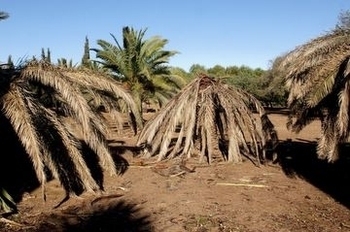- Region
- Águilas
- Alhama de Murcia
- Jumilla
- Lorca
- Los Alcázares
- Mazarrón
- San Javier
-
ALL AREAS & TOWNS
- AREAS
- SOUTH WEST
- MAR MENOR
- MURCIA CITY & CENTRAL
- NORTH & NORTH WEST
- TOWNS
- Abanilla
- Abarán
- Aguilas
- Alamillo
- Alcantarilla
- Aledo
- Alhama de Murcia
- Archena
- Balsicas
- Blanca
- Bolnuevo
- Bullas
- Cañadas del Romero
- Cabo de Palos
- Calasparra
- Camping Bolnuevo
- Campo De Ricote
- Camposol
- Canada De La Lena
- Caravaca de la Cruz
- Cartagena
- Cehegin
- Ceuti
- Cieza
- Condado de Alhama
- Corvera
- Costa Cálida
- Cuevas De Almanzora
- Cuevas de Reyllo
- El Carmoli
- El Mojon
- El Molino (Puerto Lumbreras)
- El Pareton / Cantareros
- El Raso
- El Valle Golf Resort
- Fortuna
- Fuente Alamo
- Hacienda del Alamo Golf Resort
- Hacienda Riquelme Golf Resort
- Isla Plana
- Islas Menores & Mar de Cristal
- Jumilla
- La Azohia
- La Charca
- La Manga Club
- La Manga del Mar Menor
- La Pinilla
- La Puebla
- La Torre
- La Torre Golf Resort
- La Unión
- Las Palas
- Las Ramblas
- Las Ramblas Golf
- Las Torres de Cotillas
- Leiva
- Librilla
- Lo Pagan
- Lo Santiago
- Lorca
- Lorquí
- Los Alcázares
- Los Balcones
- Los Belones
- Los Canovas
- Los Nietos
- Los Perez (Tallante)
- Los Urrutias
- Los Ventorrillos
- Mar De Cristal
- Mar Menor
- Mar Menor Golf Resort
- Mazarrón
- Mazarrón Country Club
- Molina de Segura
- Moratalla
- Mula
- Murcia City
- Murcia Property
- Pareton
- Peraleja Golf Resort
- Perin
- Pilar de la Horadada
- Pinar de Campoverde
- Pinoso
- Playa Honda
- Playa Honda / Playa Paraíso
- Pliego
- Portmán
- Pozo Estrecho
- Puerto de Mazarrón
- Puerto Lumbreras
- Puntas De Calnegre
- Region of Murcia
- Ricote
- Roda Golf Resort
- Roldan
- Roldan and Lo Ferro
- San Javier
- San Pedro del Pinatar
- Santiago de la Ribera
- Sierra Espuña
- Sucina
- Tallante
- Terrazas de la Torre Golf Resort
- Torre Pacheco
- Totana
- What's On Weekly Bulletin
- Yecla


- EDITIONS:
 Spanish News Today
Spanish News Today
 Alicante Today
Alicante Today
 Andalucia Today
Andalucia Today
Propagating Aeoniums
Costa Cálida Gardening, aeoniums are a dry gardeners best friend
 These beautiful, structural plants are one of the Spanish gardeners’ best friends, perfectly suited to the Spanish climate, requiring virtually no maintenance and ideal for dry locations with minimal watering.
These beautiful, structural plants are one of the Spanish gardeners’ best friends, perfectly suited to the Spanish climate, requiring virtually no maintenance and ideal for dry locations with minimal watering.
 They are native to the Canary Islands and Africa, and grow in a variety of colours and forms, the most commonly seen variations locally being a beautiful zingy green and a blushing burgundy, although some of us are lucky enough to own the stunning Zwartkop variety, a dark burgundy thats almost black in the heat of summer.
They are native to the Canary Islands and Africa, and grow in a variety of colours and forms, the most commonly seen variations locally being a beautiful zingy green and a blushing burgundy, although some of us are lucky enough to own the stunning Zwartkop variety, a dark burgundy thats almost black in the heat of summer.
These are very often found on the hillsides around Spanish country properties, left to their own devices and in large clumps, completely covering and dominating an area, but used in smaller clumps as underplanting to shrubs and trees, as specimen blocks on open rockery areas or in courtyard pots, they look absolutely stunning.
Watered sparingly, they will flower in April and May, the only maintenance required being to strip away the lower leaves which yellow and fall in late spring, and remove spent flowerheads, which stimulates branching out. These plants can be easily sculpted by removing lower branching, cutting out the smaller growth and training to achieve the required shape, and are a joy to propagate, striking easily and quickly.
Propagation Techniques
 Now is the time to propagate, whilst the plants are busy growing in the spring rains.
Now is the time to propagate, whilst the plants are busy growing in the spring rains.
There are 2 main techniques, the first of which is to select a rosette(head) and cut the stem about 8 inches below the succulent head. Strip off some of the lower leaves, as this means the plant can put more energy into growing a root system and expend less energy in maintaining top growth. Smaller side growth can also be removed and potted on as separate cuttings, or discarded. It is possible to use much larger branches as cuttings, but these plants grow at such an impressive rate once roots have been established, that it’s better not to be too greedy, and give the plant the best possible chance.
Allow the cut to callus ( dry out ) for a couple of days, then pot into a gritty compost mix, and top off the pot with a layer of grit.
Don’t overwater, as too much watering will rot the cuttings and the plants will root in as little as 2 weeks.
 The second technique, is to cut a stem into sections, about 10cm long, and plant with approximately 4cms in the compost and 2 cm left sticking out of the top. Astonishingly, this will grow into a perfect plant, achieving a lovely rounded shape, as individual rosettes will branch out from the side of the stump. Use this technique to control larger plants, by simply removing the top growth and reducing the plant to literally a stick.
The second technique, is to cut a stem into sections, about 10cm long, and plant with approximately 4cms in the compost and 2 cm left sticking out of the top. Astonishingly, this will grow into a perfect plant, achieving a lovely rounded shape, as individual rosettes will branch out from the side of the stump. Use this technique to control larger plants, by simply removing the top growth and reducing the plant to literally a stick.
We learnt this technique after a devastating goat raid on the rockery in which an entire seasons growth was reduced to a tragic forest of stumps, so now have not only rows of perfect plants, but a handy store of goat snacks for rainy days.
Enjoy your aeoniums, they’re really one of your best friends for low maintenance gardening.

















































